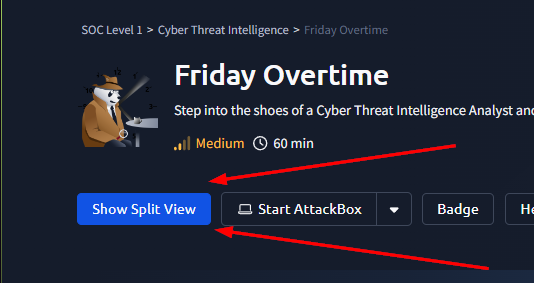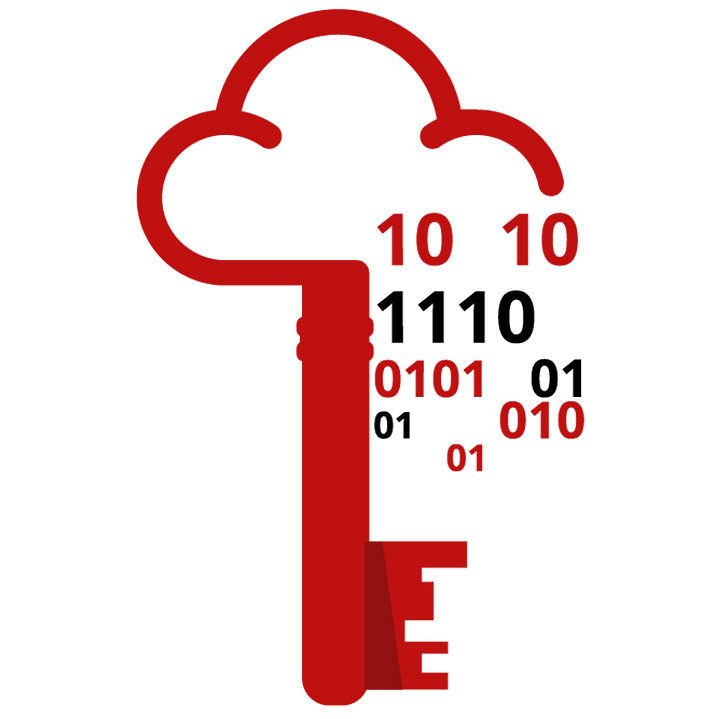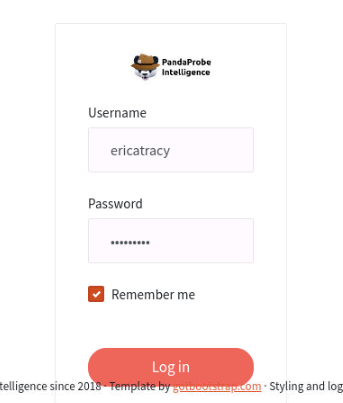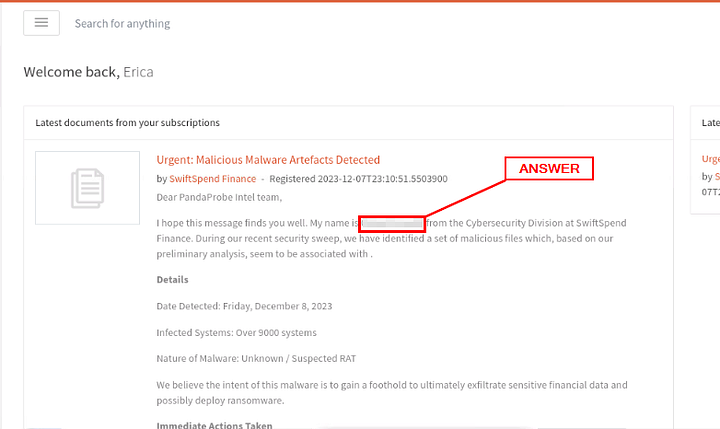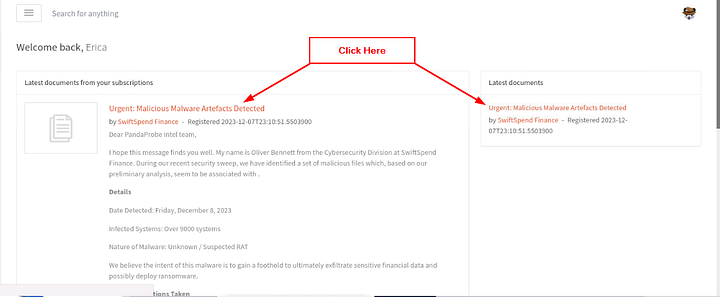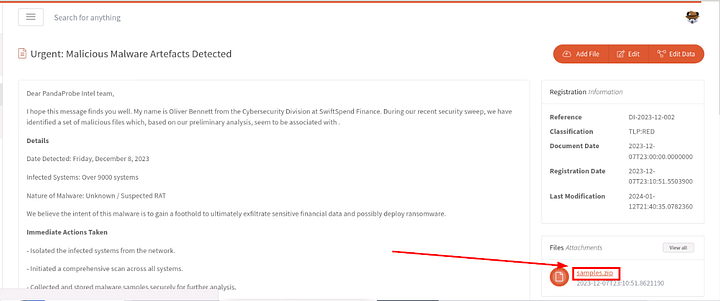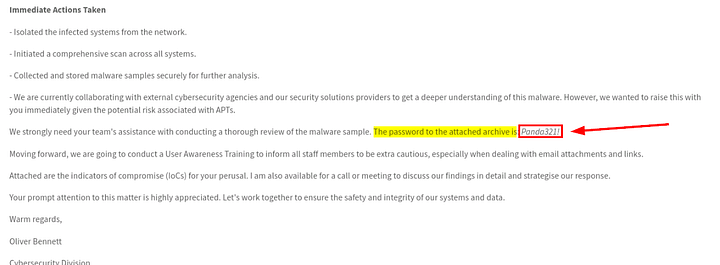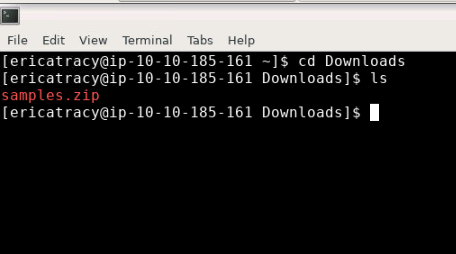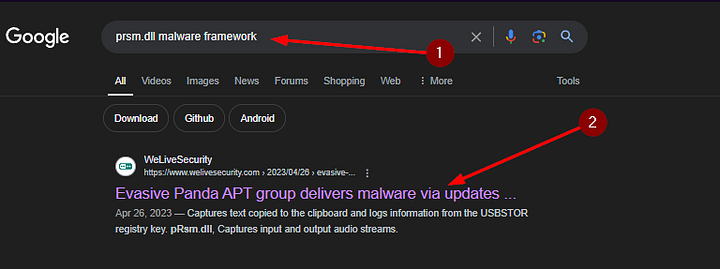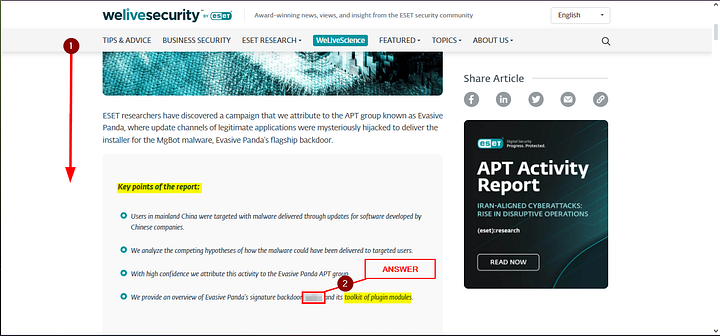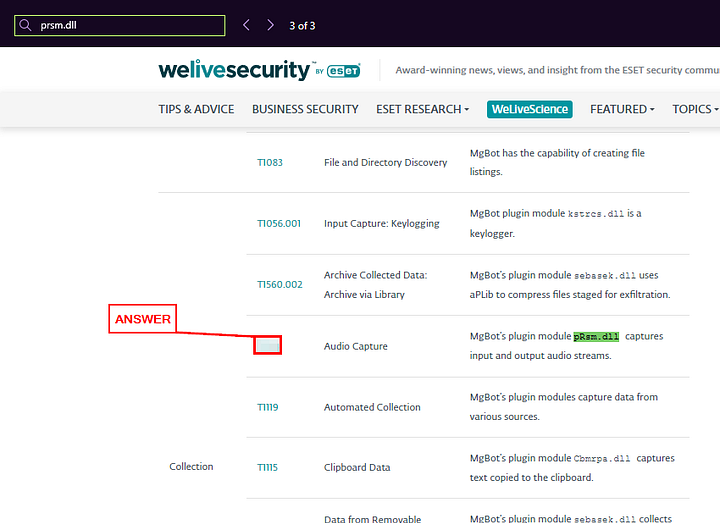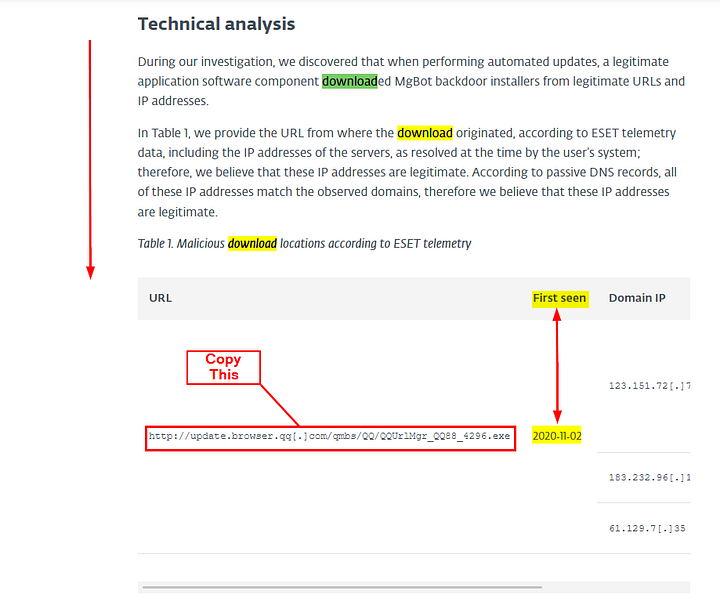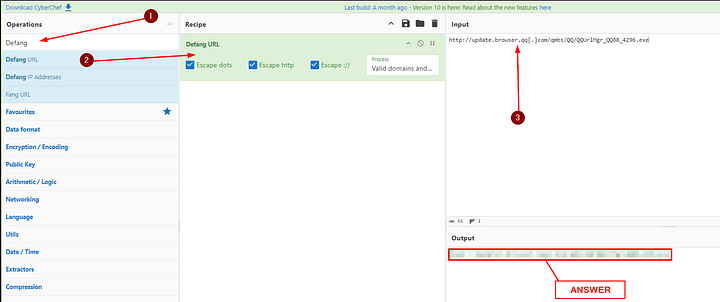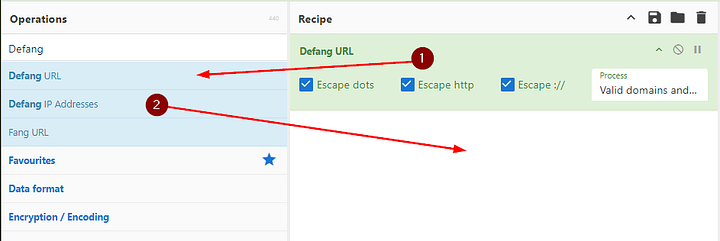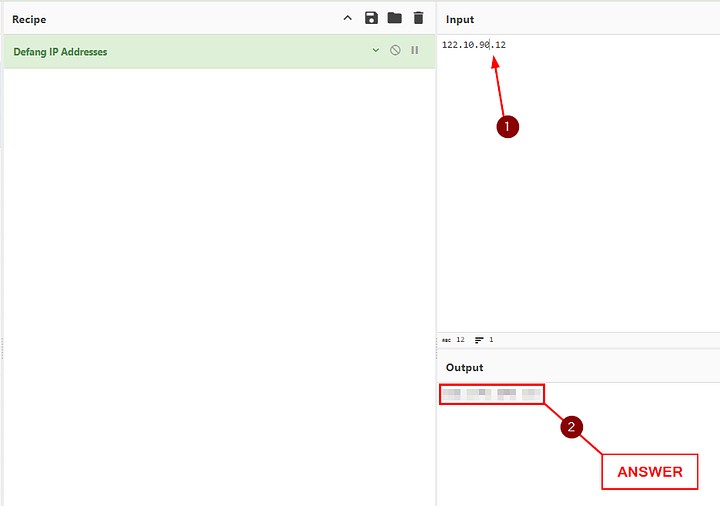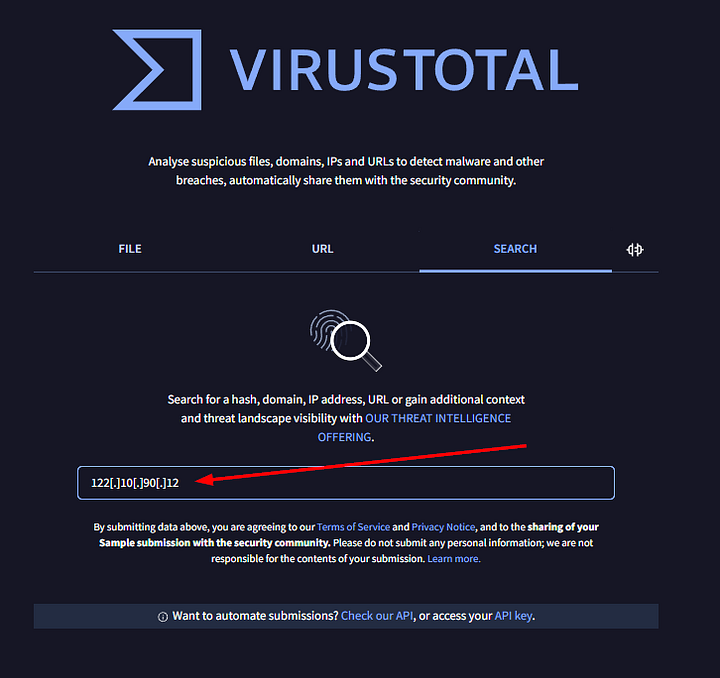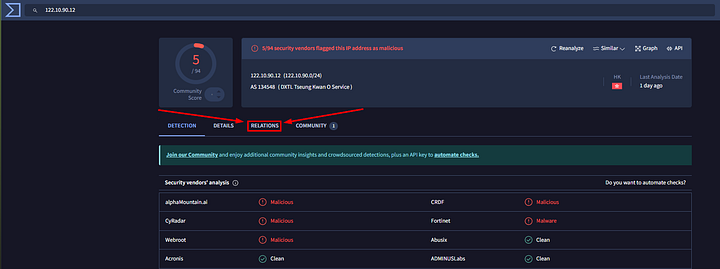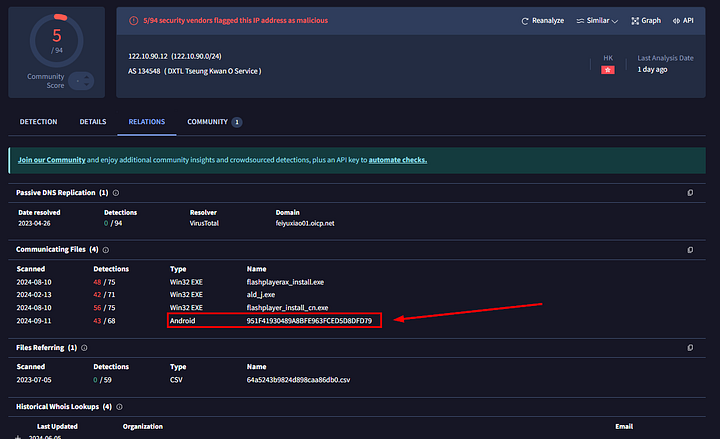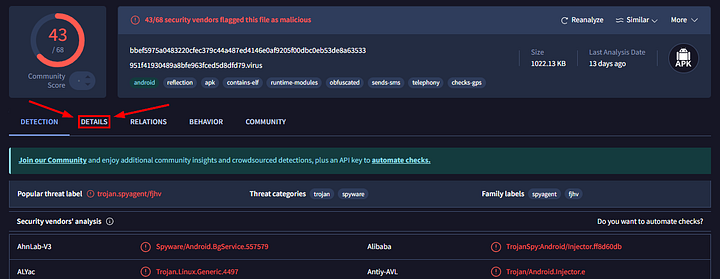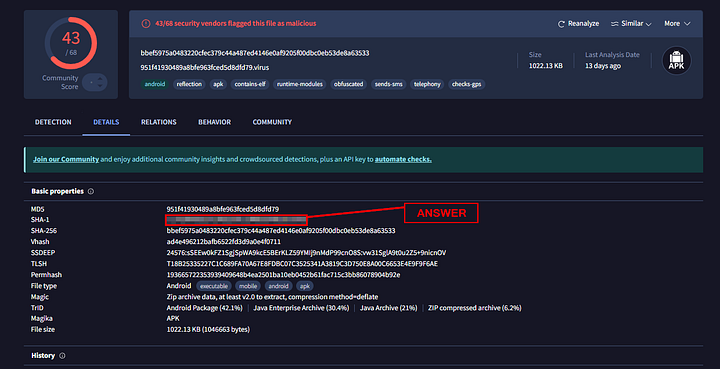This is a subscribers only room on TryHackMe. It was created by TryHackMe . Here it the link to said room, TryHackMe Room — Friday Overtime.
Step into the shoes of a Cyber Threat Intelligence Analyst and put your investigation skills to the test.
Task 1 Challenge Scenario
Disclaimer
Please note: The artefacts used in this scenario were retrieved from a real-world cyber-attack. Hence, it is advised that interaction with the artefacts be done only inside the attached VM, as it is an isolated environment.
Hello Busy Weekend. . .
It’s a Friday evening at PandaProbe Intelligence when a notification appears on your CTI platform. While most are already looking forward to the weekend, you realise you must pull overtime because SwiftSpend Finance has opened a new ticket, raising concerns about potential malware threats. The finance company, known for its meticulous security measures, stumbled upon something suspicious and wanted immediate expert analysis.
As the only remaining CTI Analyst on shift at PandaProbe Intelligence, you quickly took charge of the situation, realising the gravity of a potential breach at a financial institution. The ticket contained multiple file attachments, presumed to be malware samples.
With a deep breath, a focused mind, and the longing desire to go home, you began the process of:
- Downloading the malware samples provided in the ticket, ensuring they were contained in a secure environment.
- Running the samples through preliminary automated malware analysis tools to get a quick overview.
- Deep diving into a manual analysis, understanding the malware’s behaviour, and identifying its communication patterns.
- Correlating findings with global threat intelligence databases to identify known signatures or behaviours.
- Compiling a comprehensive report with mitigation and recovery steps, ensuring SwiftSpend Finance could swiftly address potential threats.
Connecting to the machine
Start the virtual machine in split-screen view by clicking the green Start Machine button on the upper right section of this task.
If the VM is not visible, use the blue Show Split View button at the top-right of the page.
Additionally, you can open the DocIntel platform using the credentials below.
Username: ericatracy
Password: Intel321!
IP: MACHINE_IP
Note: While the web browser (i.e., Chromium) will immediately start after boot up, it may show tabs that have “Connection Refused” displayed. This is because the DocIntel platform takes a few more minutes to finish starting up after the VM has completely booted up. The ticket details can be found by logging in to the DocIntel platform. OSINT, a web browser, and a text editor outside the VM will also help.
Answer the questions below
Who shared the malware samples?
Once you get logged into the DocIntel platform, you are greeted with the Latest documents from your subscriptions. Start reading down through the email/documents. You should be able to easily find the name of the person that sent the email/document. If you are still having trouble, make your way to the end of the email and you will find it there. Copy and paste or type the answer into the THM answer field. Then click Submit.
ANSWER: O_liver Bennett_
What is the SHA1 hash of the file “pRsm.dll” inside samples.zip?
There is a link at the top of the email/doc along with a link in the Latest Documents on the right side of the window. It is labeled Urgent: Malicious Malware Artefacts Detected, click on it.
We are now brought to the details page. From here we can see at the bottom right of the page is the sample.zip file. Click on it to download the file.
Scroll down to the Immediate Actions Taken section. About half way down down this section, you will see the following: The password to the attached archive is Panda321! . This is the password you will need to unzip the malware sample. Let’s open the terminal and get the file unzipped.
At the bottom of the screen is the icon for the terminal. Click on this icon to open the terminal.
The terminal window will open. The file will be located in the Downloads folder. Navigate there using the command cd Downloads, pressing enter to run. Then using ls to confirm that the file is here.
Using the command unzip samples.zip, will begin the unzipping process. But we first need to use the password we got from the Immediate action taken section. Which is Panda321! . Once you type this password in and press enter, the file will be unzipped in the current directory.
We can use ls again to view the newly unzipped files. We can see the pRsm.dll file amongst the files present. That file is what we need to get the SHA1 hash for.
To get the SHA1 hash for the file, we will use the command sha1sum pRsm.dll. Pressing enter will run the command and output the SHA1 hash. Highlight and copy (ctrl Shift C) and paste the hash into the THM answer field. Then click Submit.
ANSWER: 9d1ecbbe8637fed0d89fca1af35ea821277ad2e8
Which malware framework utilizes these DLLs as add-on modules?
To find the answer to this question, we need to head to our best friend Google (or your search engine of choice). I started by searching the name of our artifact along with malware framework. So the search was prsm.dll malware framework. The first result I had was from ESET about Evasive Panda APT Group. In the details sections we can see our artifact, let’s start with this result, click on it to be taken to the page.
Here is the page just in case it is not easily found: https://www.welivesecurity.com/2023/04/26/evasive-panda-apt-group-malware-updates-popular-chinese-software/
The webpage will open, and we will first need to scroll down to the start of the article. Once we see the Key points of the report, read through them. The final point will discuss about a Malware that has plugin modules. Once you find it type the answer into the THM answer field, and then click Submit.
ANSWER: MgBot
Which MITRE ATT&CK Technique is linked to using pRsm.dll in this malware framework?
Heading back to the article, let’s see if it has any information relating it to MITRE ATT&CK. To do this we can use the find feature (ctrl f ), which will open a search bar in your browser. Type in prsm.dll into the search bar. It looks like we will have 3 results, press the right arrow to cycle through them.
When we reach the third result, we reached pay dirt. You will see a MITRE ATT&CK Technique number to the left of the finding. Copy and paste or type the number into the THM answer field. Then click Submit.
ANSWER: T1123
What is the CyberChef defanged URL of the malicious download location first seen on 2020–11–02?
Looking through the question, I decided to dissect the question to see if anything stands out in the article. Starting with the word download in the find feature of the browser. We have 11 results.
note: for some reason it wouldn’t detect the date when searching for it, which is why I didn’t go this route in the explaination.
The first result doesn’t show us much. But if you scroll down a bit you will see a URL. To the right of which you can see the first time it was seen was 2020–11–02. So this is the URL we need, highlight and copy the URL. Now let’s head over to CyberChef.
Start by typing Defang in the search bar under Operations. Next drag Defang URL into the Recipe section. Moving over to the Input section, paste the URL into this section. The newly defanged URL will appear in the Output section. Highlight, copy, and paste the URL over into the THM answer field. Then click Submit.
ANSWER: hxxp[://]update[.]browser[.]qq[.]com/qmbs/QQ/QQUrlMgr_QQ88_4296[.]exe
What is the CyberChef defanged IP address of the C&C server first detected on 2020–09–14 using these modules?
This time let’s start by searching the date in the find field. Type out 2020–09–14. Only one result is found.
As we can see from the results, it gives us the IP address associated with the C&C server. Copy the IP address, then let’s head back to CyberChef.
First we need to replace the Defang URL recipe with the Defang IP Addresses recipe. To do this drag the Defang URL over to the operations column, and drag Defang IP Addresses to the Recipe section.
At first the Output won’t change. We need to do some editing of the IP address. Specifically, removing the brackets around the last period ( . ). Once this is done the Output will change and be defanged. Then highlight, copy, and paste the answer into the THM answer field. Then click Submit.
ANSWER: 122[.]10[.]90[.]12
What is the SHA1 hash of the spyagent family spyware hosted on the same IP targeting Android devices on November 16, 2022?
To find the answer to this question, we need to do some digging. Let’s start at VirusTotal. Once at VirusTotal, using the search feature, paste the fanged IP address into the search bar and press enter.
We are brought to the Detections page. Since we are looking for the SpyAgent spyware that is related to this IP address. The next logical step is to head over to Relations. Click on the Relations tab.
Now that we are in the Relations tab, we can look at some of the different types of relations associated with this IP address. The one that stands out is the Android type under Communicating Files. Let’s check it out by clicking on the Name.
We will now be brought to the new Detection page for_
951F41930489A8BFE963FCED5D8DFD79. To find the SHA1 hash, or any details about the malware, you need to click on the _Details section.
In the Basic Properties section, the second hash is the SHA1 hash. Highlight, copy, and paste the hash into the THM answer field. Then click Submit.
ANSWER: 1c1fe906e822012f6235fcc53f601d006d15d7be



